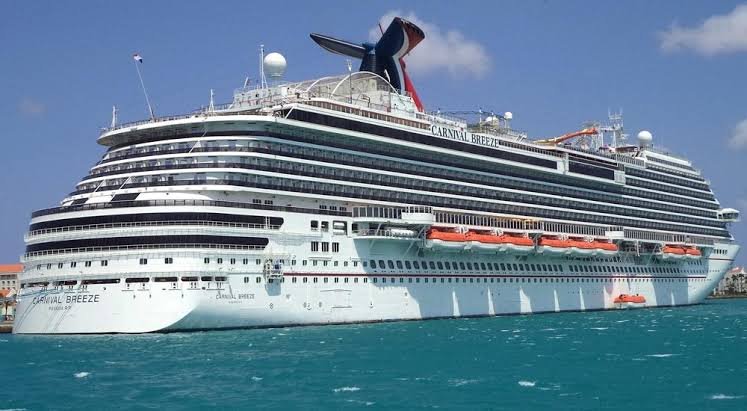
A Shocking Story: Stowaway on the Caribbean Queen
The sun shimmered over the Miami harbor as excited passengers lined up to board the Caribbean Queen, a luxury cruise set to sail through the turquoise waters of the Bahamas. Among the crowd was nineteen-year-old Maya, clutching her duffel bag with trembling fingers. Unlike the others, Maya didn’t carry a passport. She had lost it two days earlier but couldn’t bear the thought of missing the cruise her best friend had planned for months. Desperation clawed at her judgment—and she decided to try the unthinkable.
She noticed a group of porters unloading luggage and slipped behind them, feigning confidence. Wearing a fake staff lanyard she’d printed at home, she boldly strode past the security gate, murmuring, “Excuse me—late crew assignment.” To her astonishment, no one stopped her. Within minutes, she was inside the belly of the ship, adrenaline and disbelief flooding her veins. She had made it aboard—but her problems were far from over.
The ship set sail with music, champagne, and celebration. Maya ditched the lanyard, changed into a sundress, and tried to blend in. For the first two days, it worked. She shared a cabin with her friend, who swore not to say a word. But on the third morning, while the ship docked at Nassau, border agents came aboard for a random ID check. Maya’s heart froze. She tried to hide in a bathroom stall, but a cleaning crew spotted her and reported the suspicious behavior.
Security confronted her on Deck 6. She claimed she’d left her passport in her cabin, but her voice shook. When officers searched the room and found nothing, the truth unraveled. Maya confessed, crying as passengers gawked. The ship’s captain was furious—her presence without documentation was a serious breach. By international law, she was now considered an undocumented traveler in a foreign port. Worse still, the Bahamas’ immigration officials refused to let her disembark.
Instead, she was confined to a small holding room below deck. No windows. No phone. Just fluorescent lights and a rotating security guard. The cruise line coordinated with U.S. authorities to have her returned—but not before being interrogated by Bahamian officials who suspected she might be part of a human trafficking scheme. The gravity of the situation shattered her earlier thrill; this was no teenage rebellion—it was now a potential felony.
When the ship returned to Miami, she was escorted off in handcuffs. Customs and Border Protection agents took her into custody for attempting to re-enter the country without valid documents. Her parents, horrified and blindsided, flew in from Ohio. Maya was released after a hearing but faced charges for unlawful entry, impersonation, and violating maritime security protocols. The judge, however, showed leniency due to her age and clean record, sentencing her to community service and mandatory counseling.
The story spread like wildfire across social media and local news. “Cruise Stowaway Sparks International Incident” blared headlines. Maya’s college rescinded her scholarship, and her friend distanced herself, not wanting to be associated with the chaos. The cruise line issued new, stricter boarding protocols in response, warning that future violators would face prosecution without exception.
Years later, Maya wrote an article about the ordeal titled I Snuck on a Cruise Ship Without a Passport—And It Nearly Ruined My Life. It went viral. She now speaks at schools about travel laws and impulse decisions. “Adventure,” she often tells students, “should never come at the cost of your freedom.” And as for cruising? She hasn’t set foot on a ship since.






